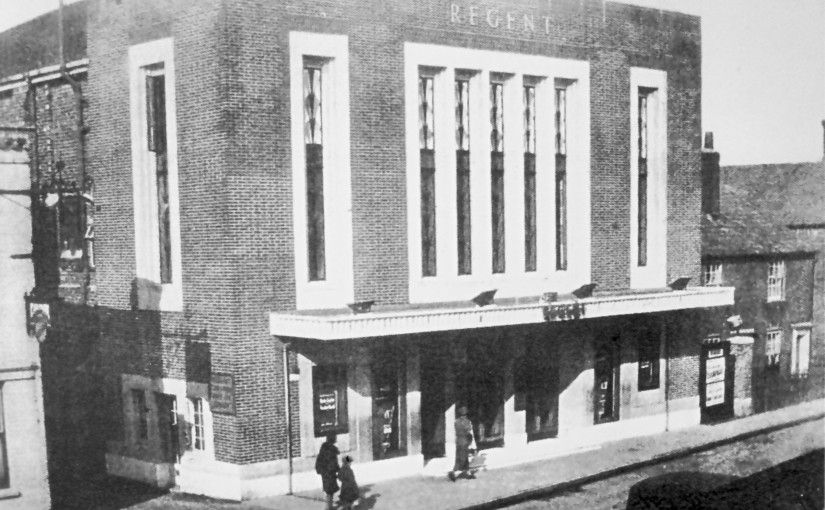By Arthur Woodgate
Following the article in the May issue of “Rye’s Own” I feel it is my duty to record my part in the history of Rye’s Picture Theatres, safety on building sites and building repairs.
I went to the Rye Electric Palace when I could raise a copper or two but always had to face mother’s small tooth flea comb when I got home. The Electric Palace was known locally as the Flea Pit! At this time there were two slum areas in the town so one faced the hazard of the comb every day when returning home from school.
By 1930 cinema was gaining in popularity. The “Shipman & King” circuit decided that Rye was worthy of something better. The Rye firm of ‘Breeds & Sons’ was awarded the contract to remove the “Cinque Ports Assembly Rooms” (Bijou) and replace it with the first Regent Picture Theatre. The Assembly Room was attached to the old Cinque Ports Hotel, so the contract included the reinstatement of that building.
It so happened that the “Rye’s Own” article pointing out the dangers to building workers in 1910 coincided with a “Construction Industry Union Journal” article in which it was revealed that now, in 2005, six building workers a month are being killed on sites in Britain. It seems the safety situation has not greatly improved in almost 100 years!
Whilst in 1910 there seemed no scaffolding at all, we did have some in 1931/32 for building the new cinema, but none was available for the demolition of the “Bijou”, which had to be done brick by brick. The front wall, including one gable, went straight up off the public pavement and two of us were sent up, one on each side. It rocked rather a lot and as we reached the apex we could see the blood had drained from each other’s face. We decided it was far from safe, went down, and told the foreman bricklayer. He had some boards lashed up the gable, then went up himself and pulled the whole lot down. The demolition of the whole building was a risky affair but we had lots of luck and all survived.
Once the site was cleared and started building there was some scaffolding, chestnut poles lashed together with 16′ long hemp ropes. Every joint had to be frequently tested because of the changes in our weather. Breeds & Sons employed two first class scaffolders in George Sims and Ceasar Bourne, they kept us safe. I can only think of one incident that could have been a danger when some upright poles; in spite of standing on boards; started to sink into the ground because too much weight had been placed on them.
William Breeds Senior was safety conscious and tribute must be paid to his choice of scaffolders and the manner in which his scaffolding and other plant was kept. If he visited a site of any size and found no signs of ongoing scaffold maintenance he started asking questions. Every board was subjected to a severe test before becoming part of the decking. Not every builder was that careful and building regulations were very sparse when the first Regent was built. It was opened on 29 Sept 1932 with a showing of Jack Hulburt and Cecely Courtnedge in “Jacks the Boy”. Two Shillings an One shilling and six pence. Stalls One Shilling and six pence, one shilling and seven pence in the front three rows.
I was proud to be part of the team that built it and terribly upset when the Germans destroyed it in 1943. When the Regent was rebuilt in 1948 Rye craftsmen were not involved. They were all busy repairing other war damaged property. The contract was given to Fasnidge, Son and Norris of Uxbridge.
At that time we were not required to wear hard hats and yellow jackets, and when the ‘steel fixers’ (‘Iron Fighters’) dropped a spanner they would shout to those below “Wipe the blood off and send it up again”.
I question why, with the present laws and regulations in force, there are just as many chaps being killed today as there were in my day.
“Rye’s Own” July 2005
All I can surmise is that it must be carelessness!All articles, photographs, films and drawings on this web site are World Copyright Protected. No reproduction for publication without prior arrangement. © World Copyright 2017 Cinque Ports Magazines Rye Ltd., Guinea Hall Lodge Sellindge TN25 6EG
